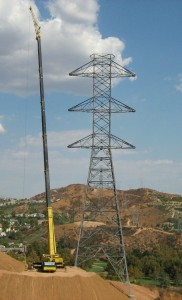Getting railroaded?
February 2nd, 2010
We all know what a pain in the patoot siting transmission is (particularly when it’s not needed). And now for something completely different — an interesting and seemingly probable theory:
ARE Y’ALL PAYIN’ ATTENTION??!!!?!?!?!
This is one of those pieces that I want to preserve to take out and reread in the not too distant future:
Buffett’s Semaphore Signal: Should Burlington Northern Shareholders Think Again Before Saying ‘Yes’ To Berkshire Hathaway?
Author: Daniel Sinclair
Reasons commentators ascribe to Buffett’s offer to acquire one of North America’s largestrail networks, Burlington Northern Santa Fe (BNSF) are now familiar. Growing global trade, continued reliance on (especially low sulphur) coal, a resurgent and growing US economy (without needing to pick product ‘winners’ and ‘losers’), a low risk way to gain exposure to any rising process for commodities, a hedge against inflation given rail’s pricing power, a competitive advantage in rail’s oligopoly and high barriers to entry, more productive rail with more efficient and technologically advanced operations and a rise double-decker railway carriages, a way to play higher oil prices and cap and trade or carbon tax laws given that rail is 3 to 4 times more fuel efficient than trucks.
Those reasons are all good, and they have been part of the core investment thesis for rail. But, it is submitted, there may be something extra that offers compelling upside to rail that has Buffett excited. Think about all the land that rail owns. BNSF, for example, operates one of the largest railroad networks in North America with about 32,000 route miles of track plus an additional 23,000 miles for other rail related infrastructure and property. Much of this land is of relatively little value beyond the use of rail. No one is going to build condos or hotels or new subdivisions along side railways.
Now think again. You think Boone Pickens has an ambitious plan for wind farms? Wait until you see what Buffett could do right across the US with his investment in BNSF. This land might become prime property for alternative energy generation including from wind and solar farms either side of rail tracks. With much of rail land in the middle of nowhere, there are few worries about the ‘not-in-my-back-yard’ crowd and more difficult regulatory approvals. Small wind mills and solar panels might be placed on the trains themselves to generate energy.
